When Tsinghua University co-hosted the Global Youth Summit on Net-Zero Future on Oct. 25, Xie Canyang, a 22-year-old student who took global environmental governance as his lifelong passion, was one of the speakers at the opening ceremony. For Xie, making a brief but high-profile appearance at a global forum marked the initial realization of his dream that began in high school and led to his interest in Tsinghua’s prestigious Global Environmental Leadership Program.
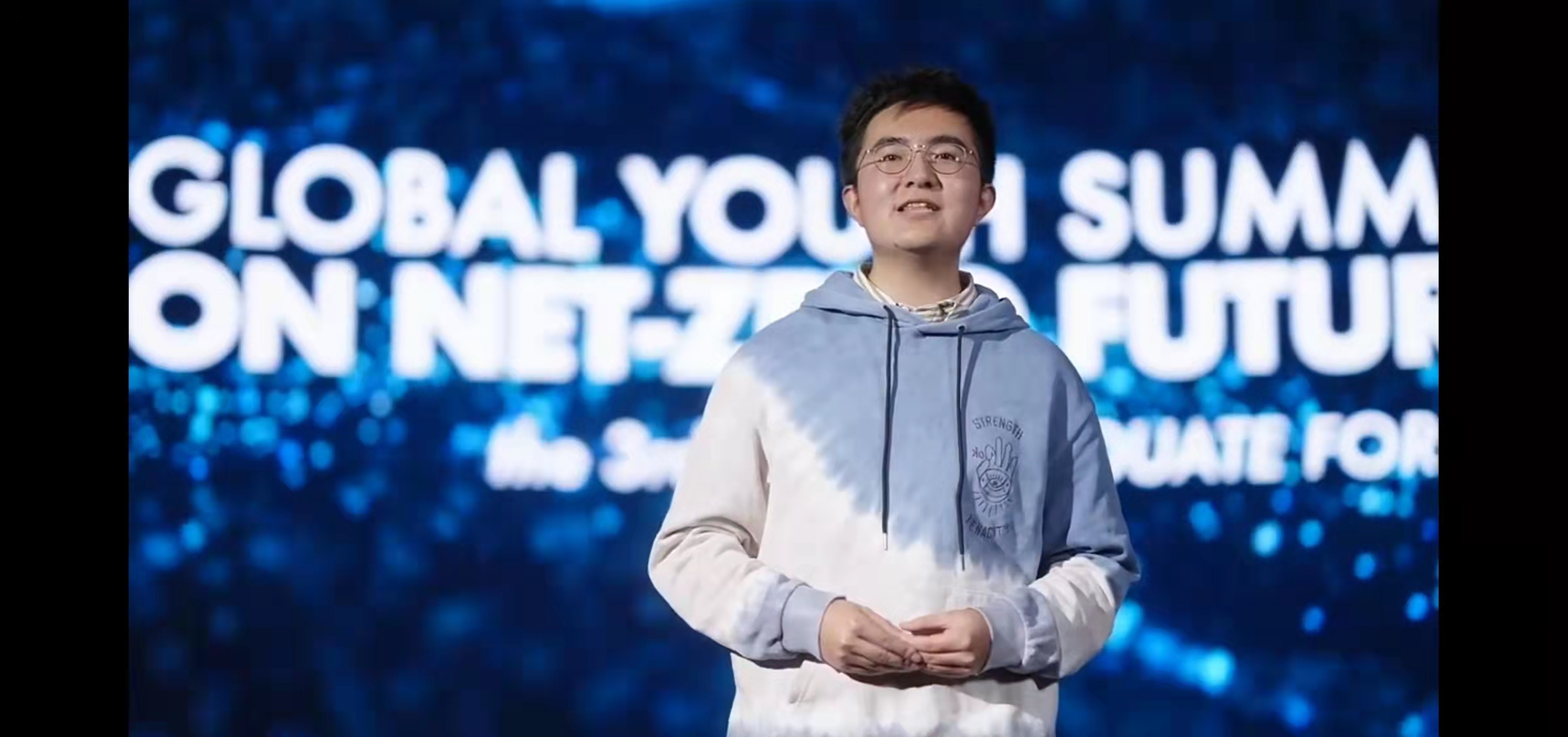
Xie Canyang delivering his speech at opening ceremony
“One of the most inspiring highlights is that the summit encourages us, the young scholars, to explore the relationship between climate change and our professional fields and propose the synergistic solutions to addressing climate crisis and other sustainable development challenges.” Xie Canyang said to the reporter.
The Tsinghua summit, whose theme was “Climate x,” was designed as a showcase for youth power for achieving carbon neutrality and a prelude to the highly expected 26th Conference of the Parties to the United Nations Framework Convention on Climate Change (COP26) in Glasgow, Scotland.
What Xie Canyang said in his speech exactly explained why he chose to become a part of GELP, the Global Environmental Leadership Program of Tsinghua University. It is a young program in operation for nearly three years, but it is ready to cultivate a new group of talents for the sustainable future of humanity.
A group of dreamers, a shared dream
In 2015, when Xie Canyang was still a first-year high school student, the documentary Under the Dome left a deep impression on him.
“Can you imagine that the blue sky without smog has already become a luxury to us? If we still take no actions, what will the world look like in a few decades?” Xie posed the same question to the reporter that he had asked himself years ago.
Xie was attracted to Tsinghua University’s Global Environmental Program (GEP) by the program’s training emphasis with multilevel objectives and diversified exchange resources. The four years of study in GEP helped Xie think deeper about what he wants and what he should do.
“The GEP wants to cultivate environmental management talents for the world, but how can I enter the international arena? What kind of core competitiveness is needed?” Xie kept asking himself. Eventually, he decided to become a student of the GELP, with a vision to further cultivate his professional competence and contribute to global environmental governance in the future.
Ana Kasznar from Brazil, the first graduate of the GELP Program, said that environmental study was holistic, enabling each student to connect what he or she has learned to other situations.
“Environment is a very current issue. On newspaper or online, people see that there are a lot being said and being done about the environment. And I think it is something that is linked to politics, economy, social well-being of everyone. I feel like environment is a very current and impactful topic,” said Kasznar.
Kasznar was very passionate towards environmental science and engineering through her undergraduate courses, with her study experience with Tsinghua back in 2017, he GELP became an obvious choice for her master’s program.
“The GELP Program is very attractive to me, because it focuses both on hard skill and soft skill. The program has a very extensive curriculum on environmental science. I know that I can learn a lot from it, at the same time, the program also offers me leadership and negotiation courses,” said Kasznar.
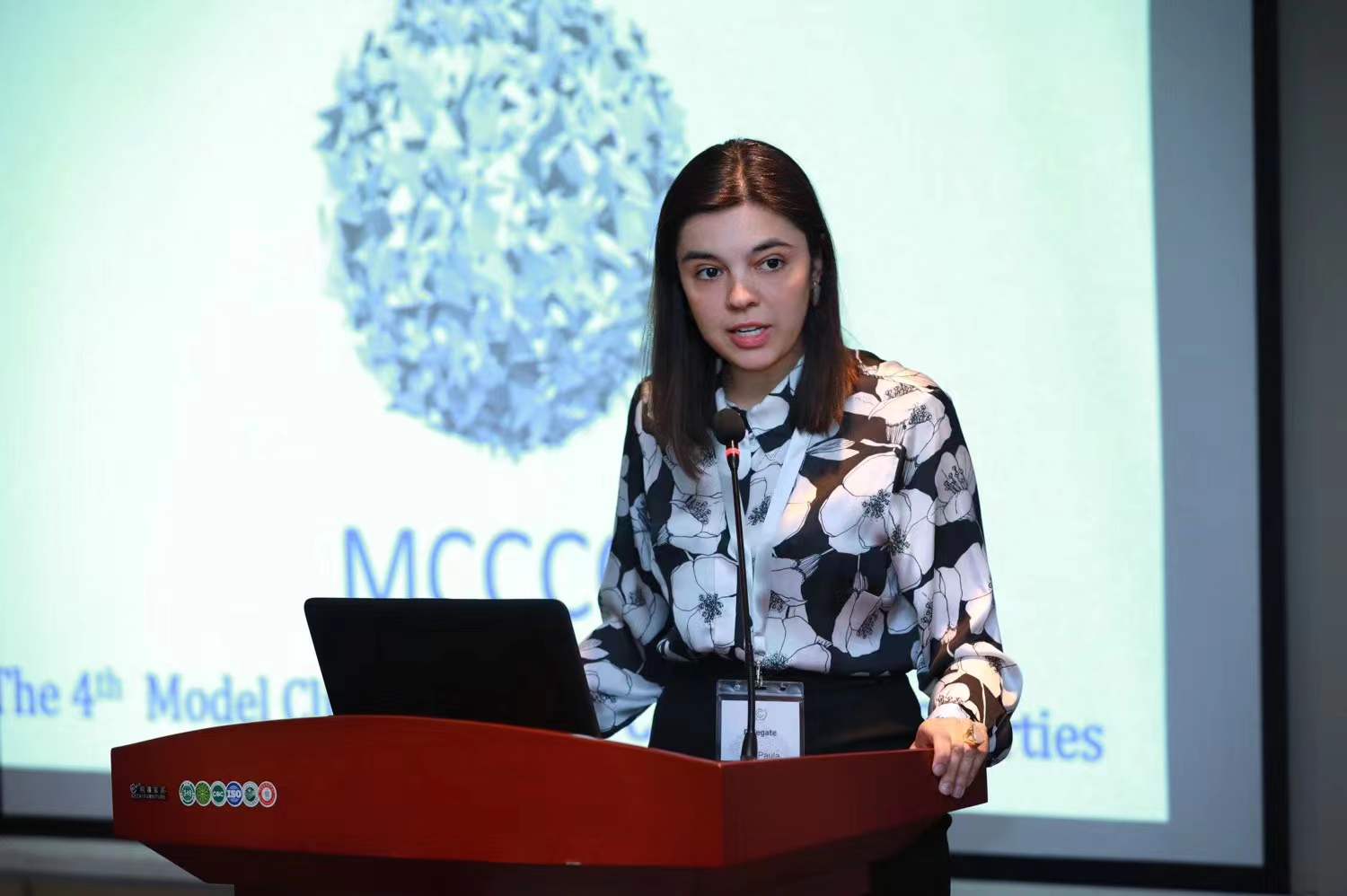
Ana Kasznar Representing Monaco for Model Climate Change Conference of Parties
Lu Xi, the Chinese director of GELP and the associate professor of the School of Environment, was not surprised to see students’ enthusiasm for international careers. The original intention of GELP was to train global environmental governance talents for international organizations. Their mission, clearly defined, is to change the world and make it a better place.
Endless pressure and challenges come with such great responsibilities. As Lu noted, engaging in global environmental work is more than standing in the spotlight of a United Nations press conference. After those glamorous moments, international environmental workers also have to stay up late and work on less-glamorous activities. Long-term international work requires high enthusiasm and a strong heart, Lu adds.
“That is why we set ‘love and affection’ as one of the important selection criteria.” Lu said when talking about the qualities they want GELP students to have.
Lu admitted that GELP has strict selection criteria and limited admission to only 15 students to maintain exceptional quality. Lu explained that the program’s goal was to cultivate high-end talents for the world through long-term sustained efforts. Considering the strength of teachers and the intensive nature of training, small class size is essential.
Find the balancing point
Xie Canyang expects to become an environmental leader with a solid theoretical foundation, which is in line with GELP’s goal of training students.
According to Lu, each student of GELP has two instructors. One of them focuses on academic knowledge and the other acts as an industry leader. In this way, the two instructors cooperate from both the theoretical and the practical aspects, jointly focusing on global environmental issues and improving the students’ professional abilities and global vision. GELP also keeps close cooperating relationships with many international organizations and world-class universities, the two main resources of student instructors.
Apart from the “dual instructor system,” Lu also mentioned some other special events of the GELP that help students’ balanced development. One of them is a unique event called “high-end interview.” It is more like an academic tea party, where those well-known experts and scholars would sit with GELP students to discuss cutting-edge trends in global environmental governance, share their career development experiences, and provide specific suggestions. Lu said that such communications could help students stay aware of the newest information in both academia and industry.
As far as the curriculum, Lu mentioned the keyword “balance” again: the balance between humanities and environmental sciences. For GELP students, both arts and sciences are significant. The program offers comprehensive training plans in management policy, engineering foundations, and general educations in humanities, economics, and law.
The hard skill of knowledge and the soft skill of communication is something that the program emphasizes on, Ana Kasznar felt like the program brought the best of both skills out of her.
“Regarding the hard skill, the content that the program provided me, really give me the confident to know what I am talking about and what must be done. I really felt like I was able to create a robust and scientific base. At the same time, for the soft skill side, the program has provided me with numerous opportunities to develop this skill. I remember I had this course on negotiation and conflict management, by learning beforehand in Tsinghua of how to negotiate and deal with a conflict, it has helped me with what I am doing in the company,” said Kasznar.
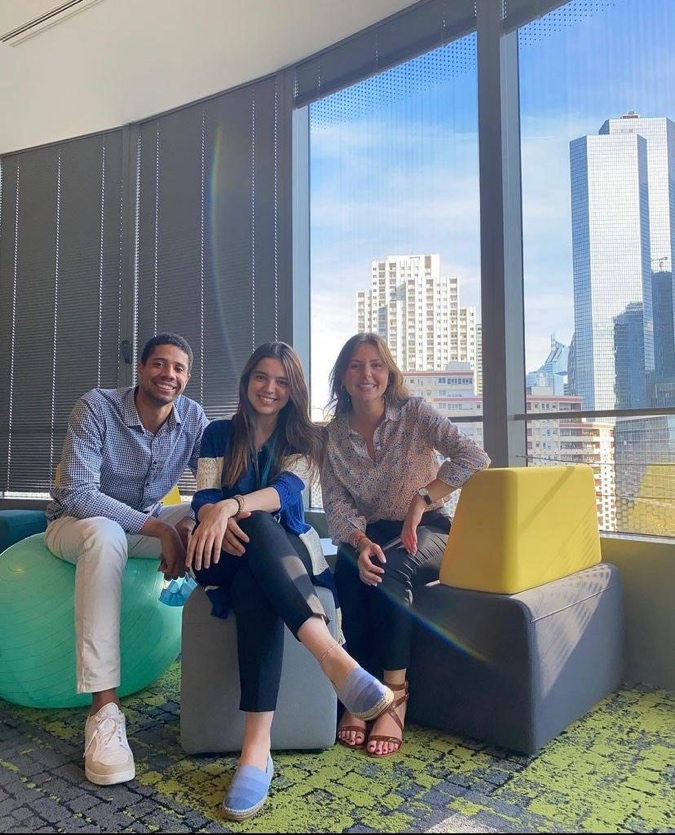
Ana’s internship at French energy company ENGIE
The dual guidance from the academia and industry, and the balanced accumulation of social sciences and natural sciences, together offer the student with adequate resources and development assistance. Kasznar was chosen to be a UNESCO youth representative as a part of the GELP for the next conference on water, mega-cities, and global change. Xie Canyang was also one of the core organizers of a side forum on biodiversity and climate change during the 15th Conference of the Parties to the Convention on Biological Diversity (COP15).
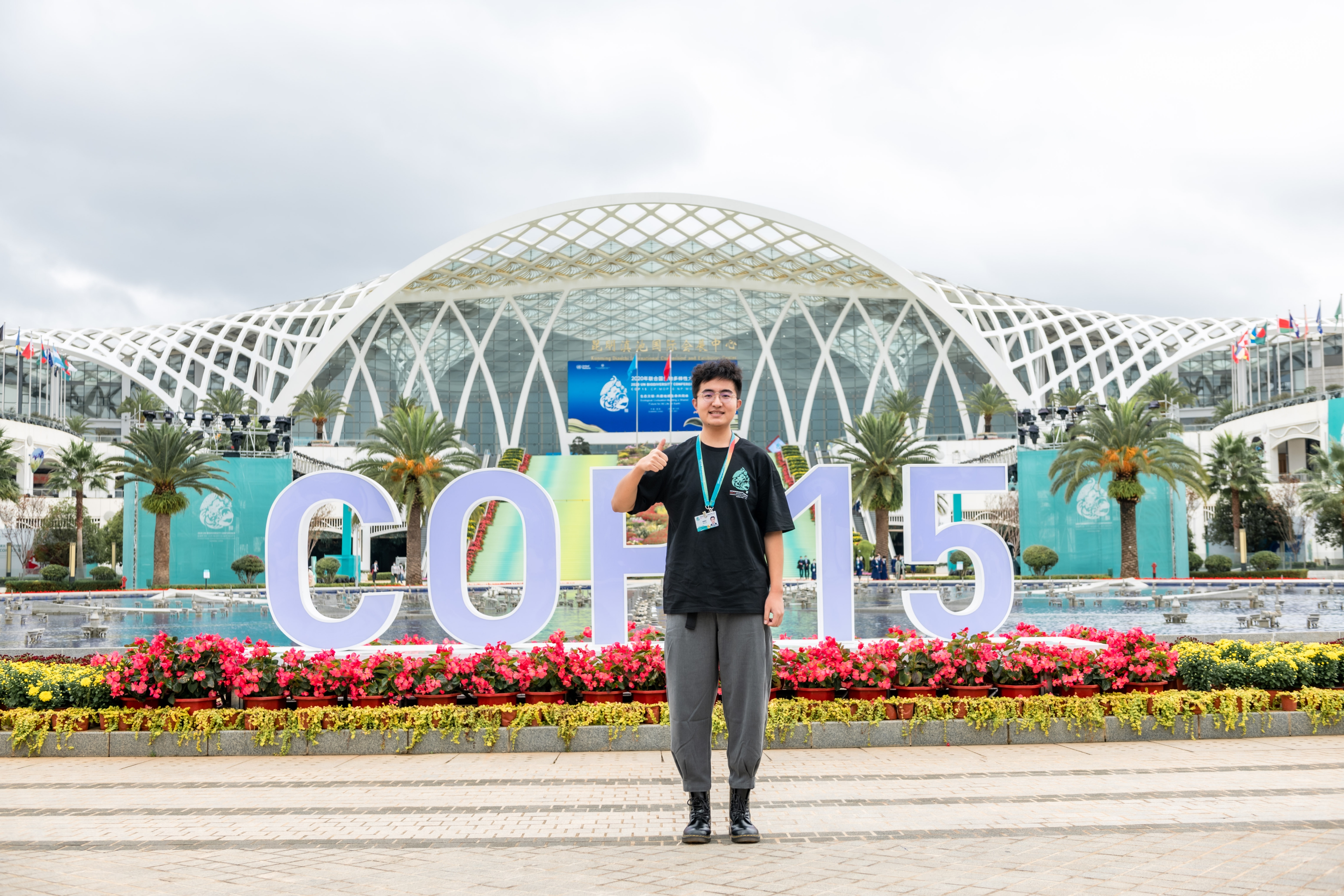
Xie Canyang at UN CBD COP15
A common issue for the whole world
For the differences between GEP and GELP, Lu said that GELP could be seen as the extension of GEP, with the addition of the word “leadership.” That subtle difference leads to the major divergence between these two programs, as GELP offers students more focused professional paths.
For GEP, undergraduate education focuses more on the study of basic knowledge and the initial cultivation of concepts. With GELP, this master’s program comes up with four major directions based on the international focuses and national strategies: “sustainable development,” “global climate change,” “chemical management” and “life diversity.”
Such segmentation of professional directions also helps students with their future planning and their understanding of the program. As Kasznar said, the best gift she has received from GELP should be the deepening of her learning and continuous practice in the industry. In this way, she gradually realized that she was entering an area growing exponentially and in desperate need of qualified leaders to condense the power of the whole world in one place.
Xie Canyang, a young GELP student who had carried out water purification campaign in Shanxi and Inner Mongolia and revealed his youth power in various international occasions, believed that the young generation should carry out environmental protection actions in a more pragmatic style.
“Since we have received a lot, it is time for us to learn to feedback.” Xie Canyang told the reporter with a big smile on his face.
Ana Kasznar is currently a sustainability consultant in McKinsey and Company in Netherland, she believed that the program has benefitted her tremendously.
“I think for sure the program helped me a lot on where I am nowadays, it is the first contact I had with environmental engineering and sciences. It gave a lot of confidence and a lot of knowledge to pursue a job in this field,” said Kasznar.
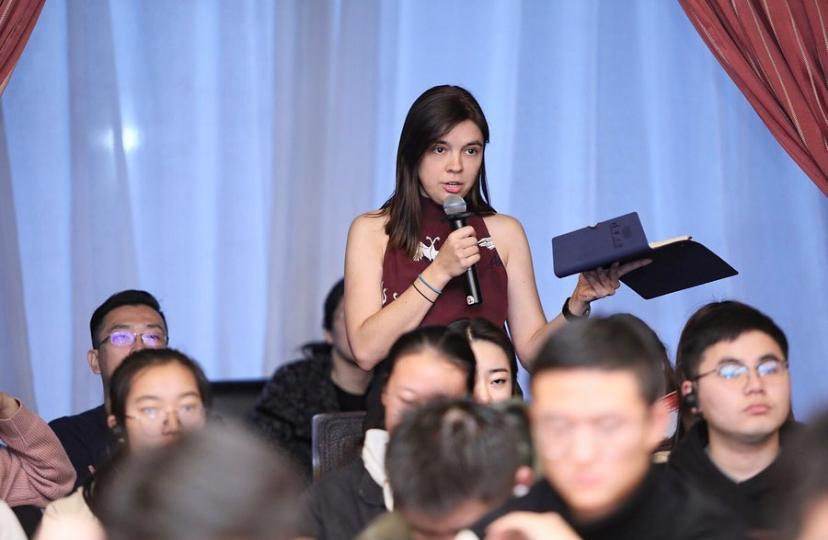
Ana Kasznar at the 2019 Climate Action and Sustainable Development Forum
Kasznar believed that such global issues can only be solved by the whole world. “There is no way for a single country or two to take the whole responsibilities. I feel like right now, more than ever, that we need people to take this environmental leadership role and to unite the inhabitants of this planet. Throughout the course of the program, I have become more certain that this is necessary.” Kasznar said.





